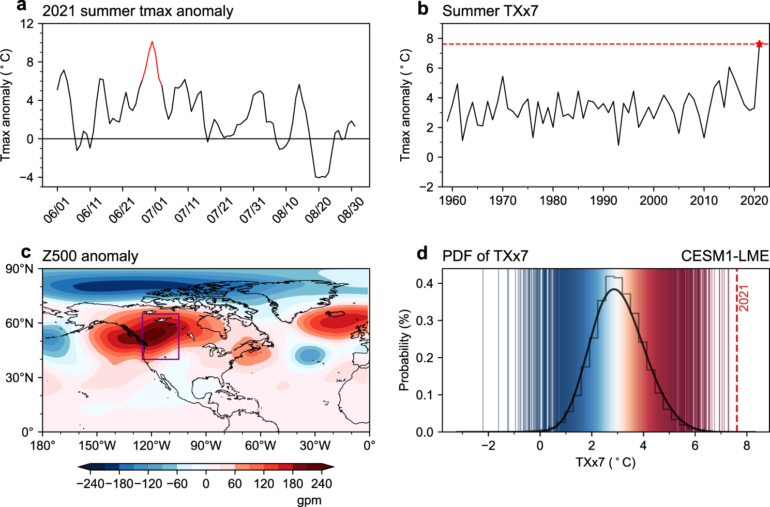In 2021, North America experienced one of the deadliest heatwaves in history. The heatwave was caused by a high-pressure system called a “heat dome” which traps hot air like a cap. To what extent the heat dome has contributed to the heatwave and whether the heat dome will continue to affect such harsh heatwaves are of great concern to both the public and the scientific community.
According to a study published in Nature Communications and led by Prof. Zhou Tianjun from the Institute of Atmospheric Physics of the Chinese Academy of Sciences, the impact of heat domes on North American heat extremes is expected to increase due to background warming and soil moisture feedback.
The team found that the heat dome-like atmospheric circulations over Western North America contributed over 50% of the magnitude of the observed high temperature. The intensities of 2021-like North American heat extremes have already been impacted by heat domes and will continue to increase due to both the background warming and soil moisture feedback.
“We examined long-term changes in extreme temperature and heat dome-like atmospheric circulation in observations. While the temperature index exhibits an accelerated warming trend since 1990, no similar trend is seen in the evolution of a heat dome-like circulation index. This indicates that the hot extreme associated with global warming increases faster than atmospheric circulation,” said Zhang Xing, first author of the study and a Ph.D. student from the University of the Chinese Academy of Sciences.
“To reveal the underlying physical reasons, we investigated the changes of soil moisture and found strong feedback to heat extremes. The soil moisture-atmosphere feedback partly explains why the intensities of hot extremes associated with similar heat domes increase faster than background global warming,” said Prof. Zhou Tianjun, corresponding author of the study.
The scientists extended their study to future climate projections. They found that the frequency of similar heat events would increase by 40-fold by the end of the 21st century compared to that in 2021 under the RCP8.5 scenario (a business-as-usual scenario).
“We also assessed changes at global warming levels of 1.5 °C, 2 °C and 3 °C. We found that if we limit global warming to 1.5 °C instead of 2 °C (3.0 °C), the 0.5 °C (1.5 °C) less warming would reduce the population exposures to 2021-like heat extreme in Western North America by ~53% (89%) under the RCP8.5-SSP5 scenario. This has important implications for climate mitigation and adaptation activities,” said Dr. Zhang Wenxia, co-author of the study.
More information:
Xing Zhang et al, Increased impact of heat domes on 2021-like heat extremes in North America under global warming, Nature Communications (2023). DOI: 10.1038/s41467-023-37309-y
Provided by
Chinese Academy of Sciences
Citation:
Background warming and soil moisture feedback will enhance impact of heat domes, says study (2023, March 31)
